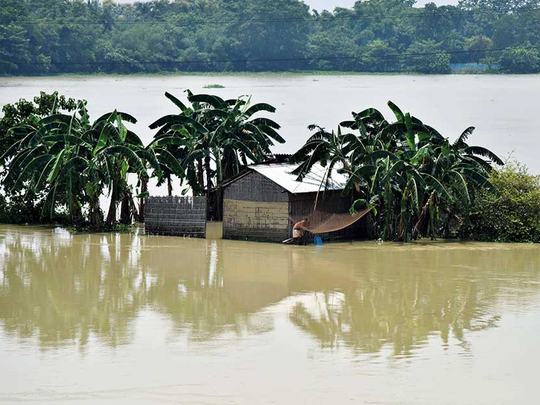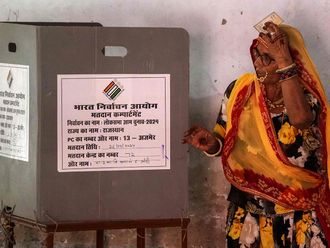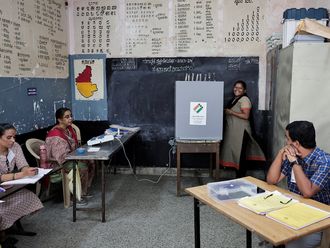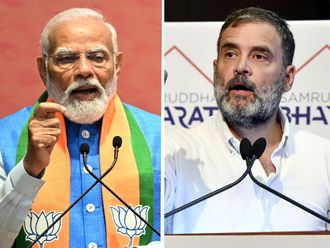
Lucknow (India): Monsoon flooding is easing in Nepal, but the water flowing downriver has worsened floods in northern India and marooned thousands of villagers across the border, officials said on Thursday.
The existing flood situation was aggravated in Uttar Pradesh state after three rivers became swelled with the waters from Nepal, said disaster relief official Mohammad Zameer Ahmad. At least six deaths have occurred since Wednesday.
Ahmad said Thursday that over 300 villages were marooned in no time and thousands of people were forced to move to higher ground.
Floods and landslides have claimed more than 250 lives in India, southern Nepal and Bangladesh, while millions of others have been displaced since the start of the monsoon season in June, officials said.
Deadly landslides and flooding are common across South Asia during the summer monsoon season that stretches from June to September. Most people die because of drowning, or after being caught in collapsed houses or under toppled trees.
On Thursday, air force helicopters dropped food packets in flood-hit villages of eastern Bihar state where 78 people have died since June. Nearly 500 army soldiers have helped thousands of rescue workers in evacuating nearly 275,000 people from 14 of 28 state districts, said Arun Kumar Singh, a state government official.
Arvind Kumar, a neighbouring Uttar Pradesh state government official, said that monsoon floods caused havoc in 22 of 75 state districts, killing at least 33 people since the start of monsoon rains.
At least 115 people have been killed in northeastern Assam state, mostly by drowning, where nearly 3,000 villages have come under water. More than 200,000 people have moved to relief camps set up by the state government.
In the Nepalese capital, the Home Ministry said that the flood waters were receding and no new casualties have been reported.
Authorities have rushed relief supplies to flood-hit areas in Nepal where incessant rain flooded hundreds of villages, killing 110 people since June. Security forces rescued people marooned on rooftops, while helicopters distributed food and drinking water packets in the worst-hit southern districts.
Two die taking flood selfies
Two Bangladeshi teenagers have died taking selfies in raging floodwaters, officials said Thursday, as the death toll from fresh monsoon downpours reached 56 with nearly five million affected.
Police said the 15-year-old boys were snapping selfies at a flooded road in the northern town of Melandah on Wednesday when they were swept away by powerful currents.
“With the school shut down due to floods, and the road underwater, they thought it was good idea to take selfies on the flooded road,” said Mohan Talukder, the headmaster of Umir Uddin School where the boys attended.
“Unfortunately huge currents washed both of them into a roadside floodplain. Several villagers tried to save them, but one of them was also washed away by floodwaters.”
Local police chief Mazharul Karim told journalists their bodies were recovered by divers after a daylong search.
Nearly half of Bangladesh is affected by the floods but the government’s weather agency has warned the worst could be yet to come, with two major rivers at bursting point.
“The flood situation in the country’s central region could worsen in the next few days,” said Sazzad Hossain, head of the Flood Forecasting and Warning Centre.
Renewed flooding has killed 56 people since Saturday, with 4.5 million directly affected, Bangladesh’s disaster management department said.
Bangladesh’s health department said coupled with those killed in separate flooding in July, at least 107 people had perished amid monsoon downpours.
The floods have destroyed nearly 200,000 houses and wiped out crops on nearly 580,000 hectares of land, officials said.
The government has opened close to 1,500 shelters where food and supplies are available, but those in hard-hit areas have complained that aid had not yet reached their villages.












